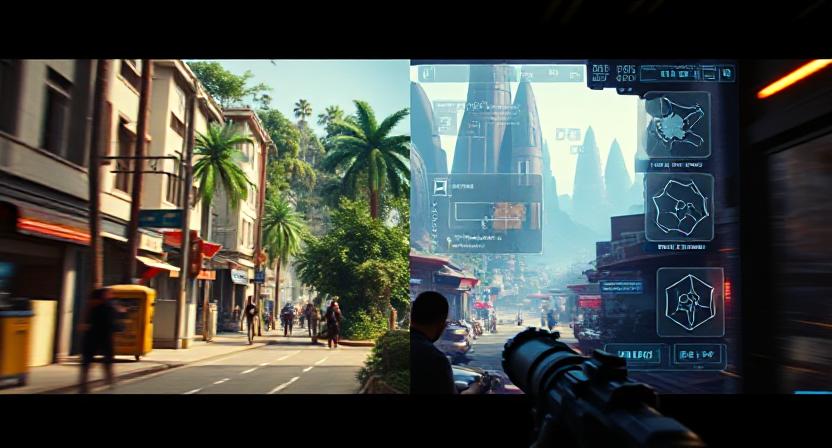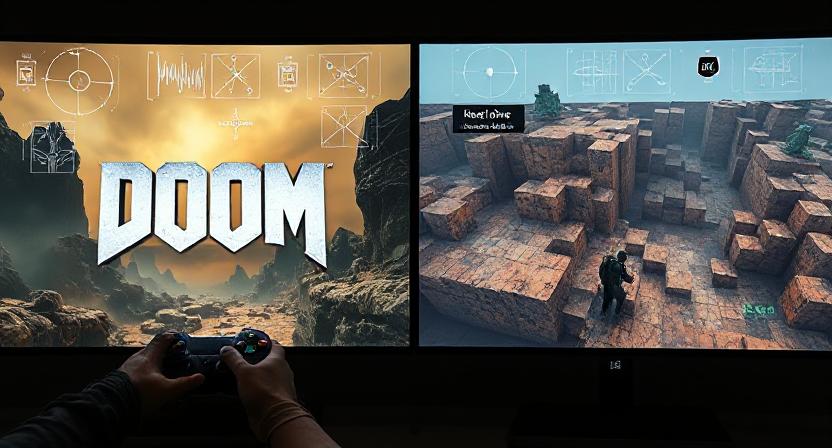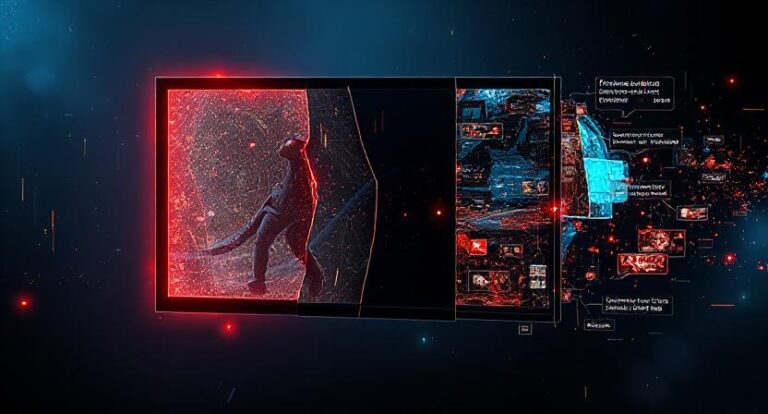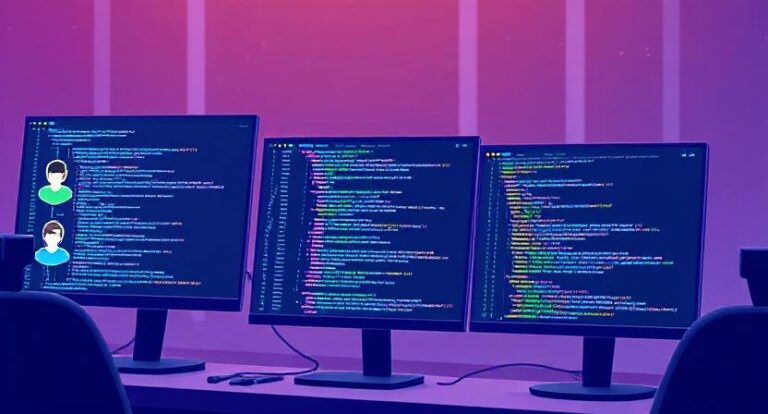AI‑Powered Video Engines in New Game Engine Era

Interactive Generative Video: The Future of Game Engines? Conventional game engines rely on prebuilt assets static levels and scripted logic. Thousands of hours are spent...
⏱️ Estimated reading time: 5 min
Latest News
Interactive Generative Video: The Future of Game Engines?
Conventional game engines rely on prebuilt assets static levels and scripted logic. Thousands of hours are spent crafting animations environments and interactions. In contrast Interactive Generative Video IGV aims to reimagine game engines by enabling real time video generation driven by player input AI and causal memory. As outlined in a recent position paper IGV lays the foundation for Generative Game Engines GGE systems capable of dynamically creating environments, characters physics and even emergent story dynamics as video based output rather than static meshes or textures.
How IGV Works: Core Modules and Mechanics
- Memory Module: Maintains static maps building layouts character appearances and short term dynamics such as animations and particle effects ensuring visual consistency across frames.
- Dynamics Module: Models physical laws like gravity collision response and movement; and allows physics tun ingadjusting game rules like friction gravity or time scaling to alter gameplay mechanics.
- Intelligence Module: Enables causal reasoning e.g. eliminating a faction leader early in a game triggers changing city behavior later and self evolution where NPCs build emergent societies trade systems or dynamic ecosystems.
Stepwise Evolution: L0 to L4
- L0 Manual: Everything is hand made levels logic assets as seen in traditional engines like Blender Game Engine. en.wikipedia.org
- L1 AI‑Assisted: Tools assist tasks automated asset creation or dialogue generation but gameplay remains predetermined.
- L2 Physics‑Compliant Interactive Video: IGV renders game video in real time based on player input and simulated physics e.g. burning bridges redirecting enemy paths.
- L3 Causal Reasoning: Long term simulated consequences world shifts based on earlier actions emergent scenarios over hours or days.
- L4 Self‑Evolving Ecosystem: Fully emergent worlds where NPCs form governments production systems social mechanics an autonomous virtual ecosystem.
Pioneering Projects & Proofs of Concept
GameFactory leverages open domain video diffusion models combined with game specific fine tuning to generate unlimited length action controllable game videos e.g. Minecraft inspired scenes. The system decouples style learning from action control, enabling new content generation while preserving gameplay responsiveness.

GameNGen Google DeepMind
An AI powered playable version of DOOM that runs at 20 fps using diffusion next-frame prediction. Human raters struggled to tell these simulations apart from the real game. This neural model acts as a real time interactive engine without conventional rendering pipelines.A neural cloned version of Minecraft playable via next frame prediction trained on extensive gameplay footage. While visually surreal it confirms that playable worlds can emerge from video prediction alone albeit in limited fidelity and consistency.
Why IGV Represents the Next Wave
Unlike PCG systems that remix existing assets, IGV can continuously generate fresh environments, emergent NPCs or branching gameplay based on player actions without storing massive premise data.
Physics-Aware Realism on Demand
By learning physical laws or integrating with simulators, IGV systems can generate visually coherent outcomes player choices cause realistic changes in terrain, objects, or NPC behavior.
Adaptive, Evolving Worlds
Causal reasoning allows worlds to change over time. For instance, ecosystems react to player mining; cities shift when river courses are blocked environments evolve beyond scripted outcomes.
Rapid Prototyping & Adaptation
Developers can try new mechanics or physics rules instantly. Adjust gravity or friction and see how scenes dynamically change without rebuilding assets or scripting logic.
Major Challenges Ahead
- Data Scale & Quality: Training requires immense video datasets labeled with physical and action parameters a nontrivial task at scale.
- Memory Retention: Maintaining visual consistency maps character models across long gameplay sequences remains hard. Explicit memory structures or scene representations are still experimental.
- Computational Load: Real time performance at high resolution is challenging. Most prototypes run at 20 fps at modest resolution. Techniques like distillation GameCraft help but real time fidelity is still nascent.
- Control Fidelity: Interactive control e.g precise player input) over generated video is still rough especially in complex action titles or long term mechanics. Early systems handle short horizon and limited state spaces well.
Potential Use Cases
Dynamic Narrative Experiences Games that respond visually to narrative branching each choice renders a unique cinematic clip rather than toggling pre-made scenes.
Looking Ahead: A Roadmap to Real Practice
- Hybrid Systems: IGV may first become viable as an overlay atop traditional engines handling cutscenes NPCs or environmental transitions while core gameplay remains mesh based.
- Integration with Procedural & RL Systems: With reinforcement learning controlling action sequences and PCG for asset creation IGV enables emergent worlds both visually and mechanically.
- Tooling for Designers: Visual first editors might allow tuning of physics parameters scene composition and causal triggers with AI rendering in near real time.
- Cultural Shift in Development: As AI handles grunt work asset generation and physics rendering game designers shift toward system design emergent gameplay patterns and narrative architecture.
Final Thoughts
Interactive Generative Video opens a radical new path no longer do we build worlds by code and assets alone. We may generate them as videos that evolve responding to player actions physics shifts and emergent logic. Though many hurdles remain scale control fidelity memory consistency as research in GameFactory GameNGen Hunyuan GameCraft and IGV modules progresses the line between scripting and simulation begins to blur.
Ultimately this approach could redefine game development. Instead of building engines developers may train worlds. Instead of scripting cutscenes they may prompt epic sequences. And gameplay may evolve as seen not coded.
Related Posts

AI Agents Monitor In-Game Behavior to Prevent Fraud
How AI Agents Detect Fraudulent Behavior Tackling a Growing Concern in Competitive Game Development The...
September 23, 2025

Interactive Generative Video Game Future Tech
Interactive Generative Video Debunking Myths The gaming industry has always evolved by embracing disruptive technologies....
September 1, 2025

New 2025 Toolkit Multiplayer Game Development
Powering Multiplayer Game Development with Next-Gen Collaborative Toolkits In today’s globalized game industry teams are...
August 19, 2025











Leave a Reply